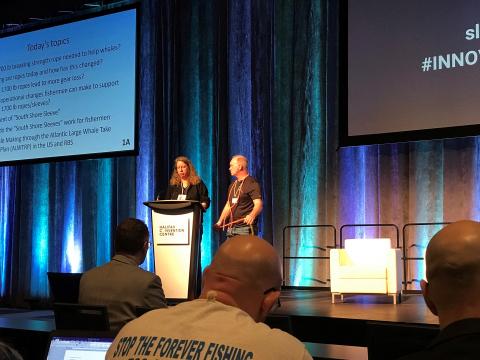The effect of artificial illumination on Chinook salmon behavior and their escapement out of a midwater trawl bycatch reduction device
The Pacific hake (Merluccius productus) midwater trawl fishery is the largest groundfish fishery off the U.S. West Coast by volume. However, bycatch of Chinook salmon can be an issue as Endangered Species Act (ESA)-listed Evolutionarily Significant Units represent a portion of the total Chinook salmon bycatch. This study investigated the influence of artificial illumination on Chinook salmon behavior and their escapement out of a bycatch reduction device (BRD) in a Pacific hake midwater trawl.

